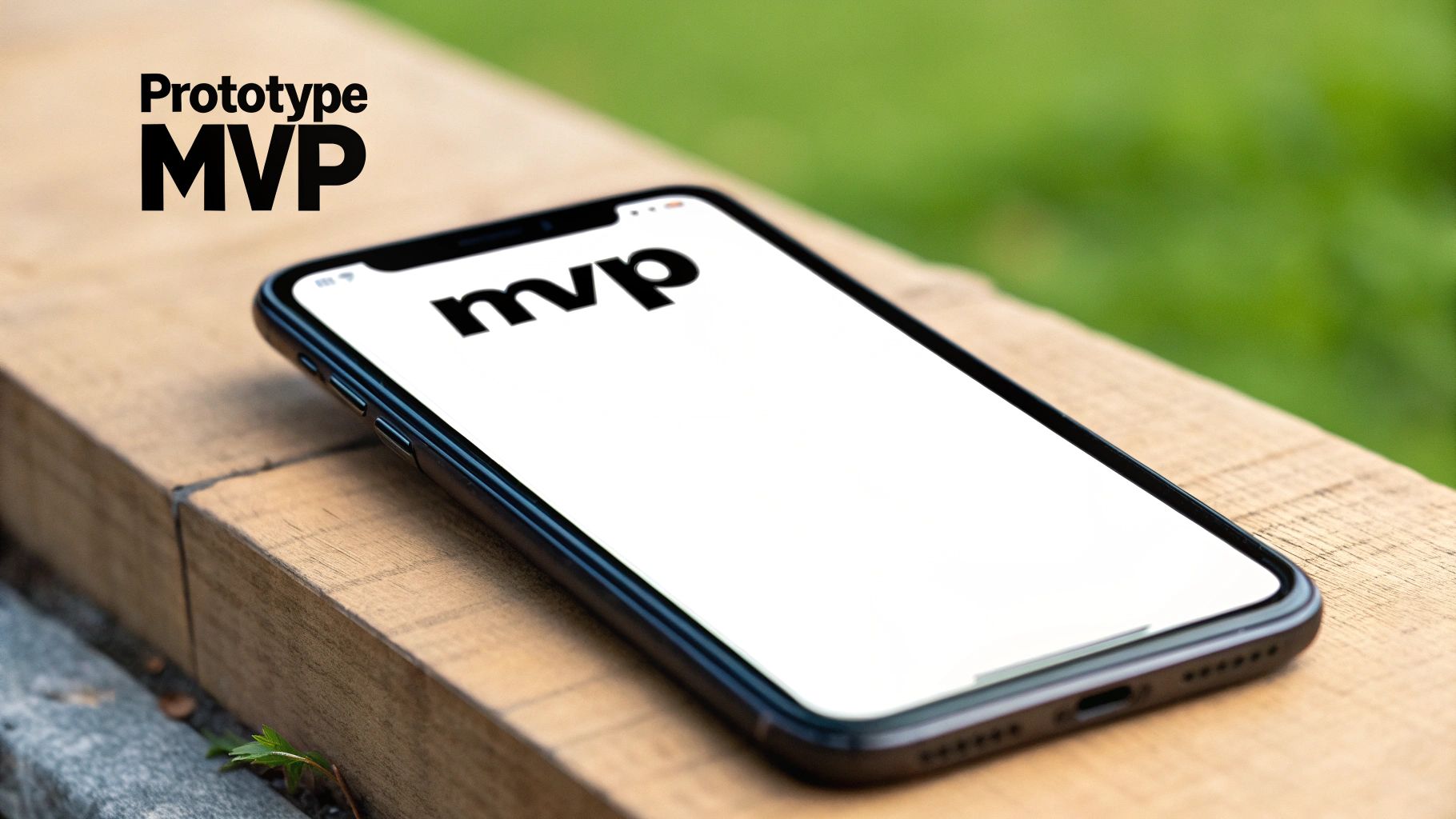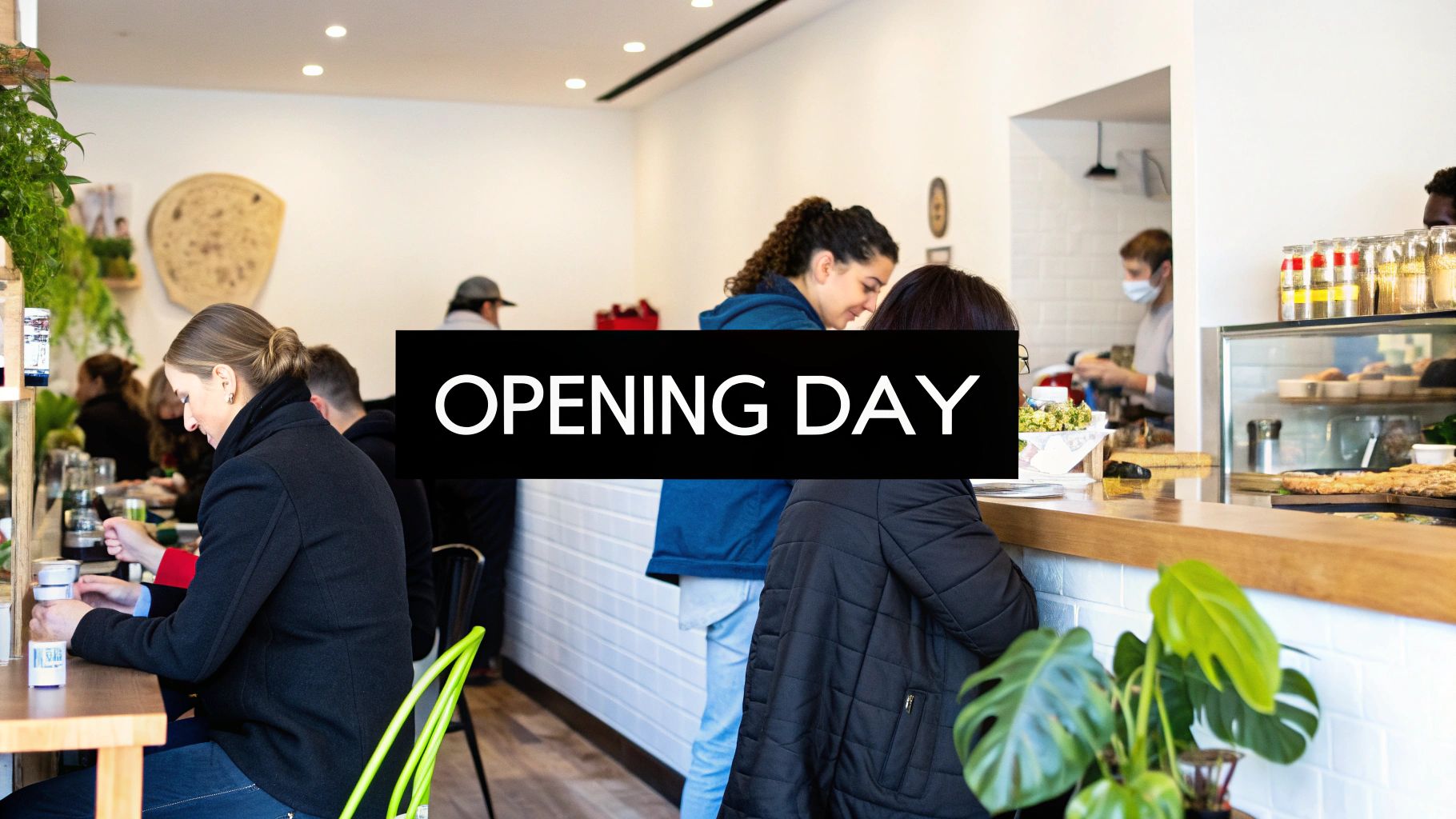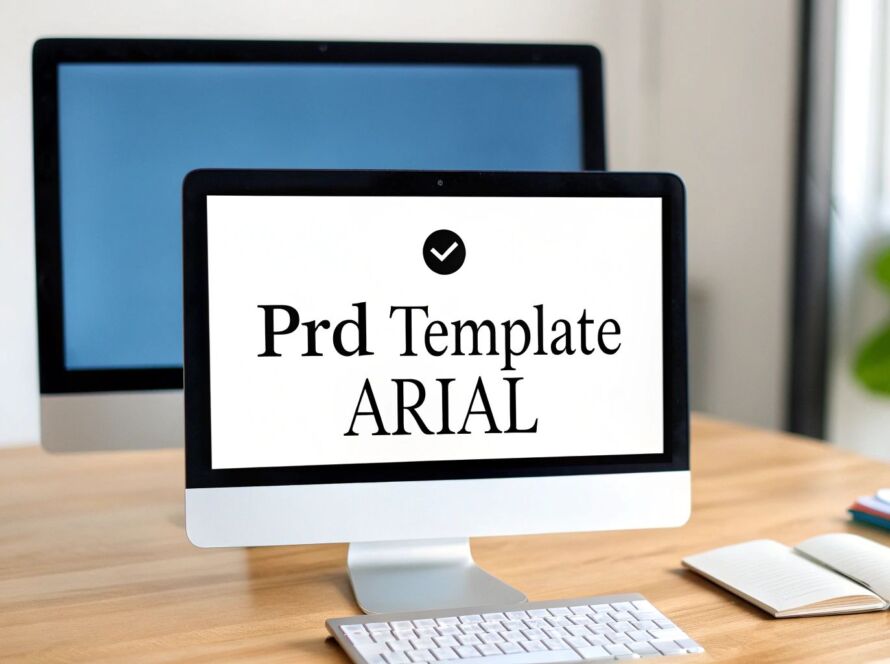The Modern MVP Mindset: Evolving Beyond Basic Prototypes
The traditional approach to minimum viable products has fundamentally changed. Simply testing a basic prototype is no longer enough in today's competitive markets. Companies need to build MVPs that combine rapid development with real quality – products that can stand up against established solutions from day one. This is especially important since many new businesses are entering mature markets where basic functionality alone won't cut it. The bar for what makes a compelling MVP has been raised.
Refining the MVP for Competitive Advantage
Success now demands a deep grasp of current market dynamics. Rather than just building bare-bones features, companies need to identify specific pain points that existing solutions don't address well. A new project management tool, for instance, can't just offer basic task tracking – it needs to provide meaningfully better collaboration capabilities or integrations that set it apart. Even initial MVP releases require more polish and differentiation than in the past to gain traction with users who have many options.
Iterative Development and User Feedback
The most effective MVPs serve as dynamic starting points rather than static end products. Smart companies launch with essential features that solve core problems, then systematically improve based on how real users respond. Looking at how successful businesses have evolved their MVPs over time provides valuable insights. For example, a social media platform might begin with fundamental posting and profile features, then methodically add messaging, groups, and discovery tools guided by user behavior and requests. This continuous refinement process helps create products people truly want to use.
Measuring Success Beyond Basic Metrics
Evaluating an MVP's performance requires looking past surface-level numbers like total users. The key is achieving genuine product-market fit – creating something that deeply resonates with your target audience. This means gathering both quantitative data on engagement and retention as well as qualitative feedback through user interviews and reviews. Take a food delivery app – while downloads matter, the real indicators of success are repeat order rates and customer satisfaction scores. Understanding which metrics matter most for your specific product helps focus development on the features that drive lasting user engagement.
Building an MVP Roadmap: From Idea to Iteration
Creating a winning MVP starts with a clear roadmap that outlines key development stages and priorities. This plan should detail not just core features but also specific approaches for gathering feedback and improving the product over time. The focus must stay on essential functionality that delivers real value rather than getting lost in unnecessary complexity. Studying successful MVPs across different industries provides practical insights for building your own roadmap. This knowledge helps teams stay focused, reduce risks, and maximize their chances of launching a product that truly connects with users. The key is maintaining the discipline to build something focused yet compelling enough to stand out in today's crowded markets.
The Zappos Story: Testing Market Demand Without Inventory

Success often starts with testing your idea in the simplest way possible. The story of Zappos, now a leading online shoe retailer, shows how starting small and smart can lead to something extraordinary. Their approach to building a minimum viable product demonstrates the power of validating your core idea before making major investments. Let's explore how they turned a simple hypothesis – that people would buy shoes online – into a billion-dollar business.
The Genesis of an E-Commerce Giant
Back in 1999, Nick Swinmurn spotted something missing in the market – no one was selling shoes online at scale. Instead of immediately investing millions in inventory and complex systems, he took a brilliantly simple approach. Swinmurn created a basic website showing photos of shoes from local stores. When someone ordered, he would personally buy the shoes from these stores and ship them to customers. This hands-on method allowed him to test if people really would buy shoes without trying them on first. The beauty was in its simplicity – minimal risk with maximum learning potential.
Validating the Hypothesis: More Than Just Sales
What made this approach so effective wasn't just the sales numbers – it was the wealth of customer insights Swinmurn gathered along the way. By handling every order personally, he learned exactly what customers cared about when buying shoes online. What were their concerns? What made them hesitate? What delighted them? These direct conversations with early customers shaped Zappos's famous customer service culture. The personal touch of the early days became the foundation for how the company would treat customers at scale.
Metrics That Mattered: Beyond the Bottom Line
While tracking sales was important, Swinmurn paid attention to other key indicators of success. He monitored how many people visited the website, what percentage actually bought shoes, and how much they typically spent. He also kept close watch on what it cost to acquire each new customer. These numbers helped show whether the business could work on a larger scale. Each metric told part of the story about whether people were ready to embrace buying shoes online.
From MVP to Acquisition: The Zappos Legacy
The simple website that started with manual fulfillment proved that the core idea worked. This validation helped attract investment to build out proper inventory and automation systems. The lessons learned from those early days – especially about the importance of stellar customer service – remained central to Zappos's identity. When Amazon acquired Zappos for $1.2 billion in 2009, it wasn't just buying a successful shoe retailer. It was investing in a company that had mastered the art of making customers happy, all because they started by testing their idea in the simplest way possible. The key lesson? Sometimes the best way to build something big is to start by thinking small and focusing on what matters most.
Dropbox's Viral Video Strategy: Validating Without Building
Most people think creating a minimum viable product means writing code and building a working prototype. But Dropbox took a brilliantly different path – they validated their idea with just a simple video. Their story shows how smart testing of market demand doesn't always require a finished product.
Understanding the Need: A Problem Worth Solving
Drew Houston, Dropbox's founder, noticed something that frustrated him and many others – syncing files between computers was a major headache. The existing solutions were clunky and unreliable. While Houston had a clear vision for fixing this problem, building the actual solution would take significant time and resources. He needed a way to test if people really wanted his solution before diving into development. His creative approach to this challenge proved to be game-changing.
The Power of a Demo Video: Showcasing Value
In 2007, Houston released a video that walked through how Dropbox would work – even though the product didn't exist yet. Through careful screen recordings and clear narration, he showed exactly how simple file syncing could be. The video spoke directly to the daily frustrations of his target users. By focusing on the end-user experience rather than technical details, Houston helped viewers envision how Dropbox would make their lives easier. Most importantly, he achieved this without writing a single line of code.
Measuring Success: Metrics that Mattered
The response was incredible. Within 24 hours, 75,000 people signed up for the Dropbox waitlist. This surge of interest proved that Houston had identified a real problem that countless people wanted solved. The dramatic spike in sign-ups gave him concrete evidence that potential users were not just mildly interested – they were eager to get their hands on the product.
Securing Funding: Leveraging Validation
The massive waitlist growth caught investors' attention. The video had proven there was genuine market demand, which made the funding conversation much easier. Rather than just pitching a concept, Houston could point to tens of thousands of people actively waiting for the product. This real-world validation helped convince investors to back Dropbox's development.
Lessons Learned: The Dropbox MVP and Beyond
Dropbox's approach shows that validating a business idea doesn't always require a working prototype. By clearly demonstrating the solution to a common problem, they built excitement and proved market demand before investing heavily in development. The key lessons? Focus on solving real user problems, communicate your solution clearly, and find creative ways to test market interest early. This thoughtful approach helps reduce risk while maximizing potential for success.
From Simple to Scale: Uber and Amazon's MVP Evolution

Building an MVP is just the beginning – the real magic happens in how you grow from there. Two perfect examples of this are Uber and Amazon, companies that started small but expanded thoughtfully into the giants we know today. Their stories show that success comes from careful expansion guided by real customer needs and insights.
Uber: From San Francisco to Global Domination
When Uber launched in 2009, they kept things remarkably simple. Rather than trying to serve everyone everywhere, they focused solely on San Francisco's need for better transportation. This laser focus allowed them to truly understand what worked and what didn't. For example, they quickly discovered issues with getting new drivers onboarded and were able to fix these problems fast since they were only managing one city's worth of feedback.
The early days were all about building strong connections within San Francisco. Uber went to local events, partnered with businesses, and used social media to spread the word. By staying local, they could meet users face-to-face and learn exactly what people wanted. This personal touch helped them refine their service before taking on bigger challenges.
Amazon: From Books to Everything
Amazon's story started much smaller than the everything store we know today – they just sold books online. This narrow focus let them perfect the basics of online shopping when most people were still nervous about buying things on the internet. They could work out shipping logistics and customer service kinks while dealing with just one type of product. The insights they gained from selling books shaped how they would later handle everything from music to electronics.
What's fascinating about Amazon's early growth is that they didn't rely on flashy marketing. Instead, they obsessed over making customers happy, believing that excellent service would naturally lead to word-of-mouth growth. This patient approach built trust when online shopping was still new to most people.
Key Takeaways for Scaling Your MVP
Looking at Uber and Amazon's journeys, we can see clear patterns in how to grow successfully. They didn't rush to expand – they moved carefully, learning from data and feedback at each step. Here's what we can learn from them:
- Start Focused: Pick a specific market and nail the basics there first. You'll learn more and improve faster when you're not spread too thin.
- Data-Driven Decisions: Watch your numbers closely and let them guide where you expand next. Focus on what's working well with your current users.
- Customer Feedback is King: Really listen to what your users tell you. Their experiences and suggestions should shape your growth plans.
- Iterate and Adapt: Be ready to change direction based on what you learn. Your first ideas might need tweaking as you grow.
These stories show that scaling works best when you grow step by step, always guided by what your users actually want and need. By following their example, you can turn your MVP into something much bigger – just remember to stay patient and keep learning along the way.
Measuring MVP Success: Beyond Basic Metrics
Launching a minimum viable product is about more than just releasing a basic version – it's about creating a system to learn from your users. While many teams focus on surface-level metrics like total downloads, the most successful MVPs dig deeper by combining both hard data and user feedback to truly understand what's working. Let's explore the key metrics and frameworks that will help you measure your MVP's real impact and potential.
Identifying Key Performance Indicators (KPIs) for Your MVP
The most valuable KPIs directly connect to your core value proposition and user needs. For a food delivery MVP, downloads provide initial insight, but metrics like repeat order rates and average order value reveal much more about actual user engagement and business potential. With a SaaS product, tracking customer churn rate shows whether users find enough ongoing value to stay. The key is choosing metrics that clearly indicate if your MVP solves real problems for your target users.
Qualitative Data: The Voice of Your Customer
Numbers tell part of the story, but user feedback adds crucial context and depth. By gathering insights through surveys, interviews, and in-app feedback tools, you can understand not just what users do, but why they do it. Take Zappos, for example – they built their company on stellar customer service by carefully listening to early user feedback during their MVP phase. This helped them shape their product around actual customer needs and preferences.
Actionable Metrics: Driving Iteration and Improvement
Metrics only matter if they guide your product decisions. By analyzing your data to spot improvement opportunities, you can iterate on your MVP strategically. For instance, if you see many users dropping off at a specific onboarding step, that's a clear signal to simplify that part of the experience. Dropbox demonstrated this well – they carefully analyzed the strong response to their demo video to create a focused development plan that addressed user needs.
Benchmarks and Industry Standards
While every MVP is different, industry benchmarks provide helpful context. Mobile apps typically aim for 10% daily active users and 30%+ monthly retention, though your specific targets should align with your market and business model. Research similar products in your space to set realistic goals and identify where you're excelling or lagging behind.
Building a Measurement Framework for Your MVP
A structured approach to measurement ensures you track and use metrics effectively. Your framework should include:
- Clear Objectives: Define specific goals for your MVP
- Key Metrics: Select the most relevant metrics for measuring progress
- Data Collection Methods: Choose tools and processes for gathering data
- Analysis and Reporting: Plan how you'll review and share insights
- Action Plan: Create processes for using data to improve your MVP
By taking a methodical approach to measurement, your MVP becomes a powerful tool for learning and growth. This foundation of data-driven decisions will guide your product development far beyond the initial launch phase.
Building Your MVP Roadmap: From Concept to Launch

Turning an exciting product idea into reality requires more than just inspiration – it needs a clear, actionable plan. Let's explore how to create a strategic roadmap that will guide your minimum viable product (MVP) from initial concept through successful launch. With the right approach, you can stay focused on what matters most while building something your users will love.
Defining Your MVP's Core Purpose
Start by getting crystal clear on the specific problem you want to solve. Think about Airbnb's beginnings – they identified a real need for affordable travel accommodations and created a simple platform connecting people with spare rooms to travelers. By focusing on this core challenge, they were able to test their concept quickly and effectively. Your MVP should similarly target one key pain point that resonates with your target users.
Choosing the Right MVP Type
The format of your MVP should match your goals and constraints. For example, Zappos started by manually processing orders behind a basic website interface – this "Wizard of Oz" approach let them validate demand before investing in complex systems. Amazon began by selling only books online, mastering one specific offering before expanding. Consider which MVP style will let you learn the most while minimizing initial complexity.
Prioritizing Features: Must-Haves vs. Nice-to-Haves
Focus is essential – you need to separate truly critical features from optional enhancements. Look at how Uber started with just the basics: connecting riders to drivers through a simple app. They proved their core value proposition worked before adding features like ride tracking or split payments. Build only what you need to solve your users' primary problem.
Building a Feedback Loop
User input should guide every step of development. Dropbox brilliantly demonstrated this by releasing just a demo video with a waitlist – the overwhelming response showed they were on the right track before writing a single line of code. Create clear channels for gathering and acting on user feedback from day one.
Development Stages and Milestones
Break down your MVP journey into concrete phases with specific goals. Each stage should focus on building and validating key functionality. Regular milestone reviews help you stay on track and adjust course based on what you learn. Think in terms of small, achievable steps rather than trying to do everything at once.
Launch and Iteration: The Continuous Cycle
Launching your MVP marks the beginning, not the end. Uber didn't try to launch everywhere at once – they started in San Francisco, learned what worked, and gradually expanded based on real usage data. Plan to continuously gather feedback and improve your product based on how people actually use it.
| Stage | Description | Example |
|---|---|---|
| Concept | Define the problem and proposed solution | Airbnb's initial idea |
| MVP Type | Select appropriate format (Wizard of Oz, Single-Feature, etc.) | Zappos's manual fulfillment |
| Feature Prioritization | Identify core features essential for the initial launch | Uber's initial ride-hailing app |
| Feedback Loop | Establish mechanisms for gathering user feedback | Dropbox's waitlist strategy |
| Development | Break down development into stages with milestones | Phased feature implementation |
| Launch & Iterate | Release the MVP and continuously improve based on feedback | Uber's city-by-city expansion |
Creating a successful MVP is about smart planning, focused execution, and constant learning. Need help bringing your product vision to life? Contact MarkBox Studios today. Our experienced team specializes in guiding founders through the MVP development process, helping you build a strong foundation for growth.



